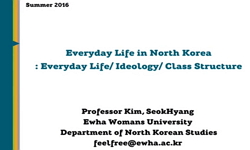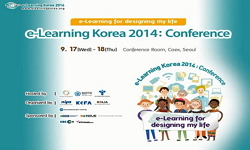Purpose: The aims of this study were to examine the distribution of refractive errors and clinical characteristics of strabismus in Korean patients with Down’s syndrome. Methods: A total of 41 Korean patients with Down’s syndrome were screened for...
http://chineseinput.net/에서 pinyin(병음)방식으로 중국어를 변환할 수 있습니다.
변환된 중국어를 복사하여 사용하시면 됩니다.
- 中文 을 입력하시려면 zhongwen을 입력하시고 space를누르시면됩니다.
- 北京 을 입력하시려면 beijing을 입력하시고 space를 누르시면 됩니다.
https://www.riss.kr/link?id=A103853953
- 저자
- 발행기관
- 학술지명
- 권호사항
-
발행연도
2012
-
작성언어
English
- 주제어
-
등재정보
KCI등재,SCOPUS
-
자료형태
학술저널
-
수록면
451-454(4쪽)
-
KCI 피인용횟수
0
- 제공처
-
0
상세조회 -
0
다운로드
부가정보
다국어 초록 (Multilingual Abstract)
Methods: A total of 41 Korean patients with Down’s syndrome were screened for strabismus and refractive errors in 2009.
Results: A total of 41 patients with an average age of 11.9 years (range, 2 to 36 years) were screened. Eighteen patients (43.9%) had strabismus. Ten (23.4%) of 18 patients exhibited esotropia and the others had intermittent exotropia. The most frequently detected type of esotropia was acquired non-accommodative esotropia, and that of exotropia was the basic type. Fifteen patients (36.6%) had hypermetropia and 20 (48.8%) had myopia. The patients with esotropia had refractive errors of +4.89 diopters (D, ±3.73) and the patients with exotropia had refractive errors of -0.31 D (±1.78). Six of ten patients with esotropia had an accommodation weakness. Twenty one patients (63.4%) had astigmatism. Eleven (28.6%) of 21 patients had anisometropia and six (14.6%) of those had clinically significant anisometropia.
Conclusions: In Korean patients with Down’s syndrome, esotropia was more common than exotropia and hypermetropia more common than myopia. Especially, Down’s syndrome patients with esotropia generally exhibit clinically significant hyperopic errors (>+3.00 D) and evidence of under-accommodation. Thus, hypermetropia and accommodation weakness could be possible factors in esotropia when it occurs in Down’s syndrome patients. Based on the results of this study, eye examinations of Down’s syndrome patients should routinely include a measure of accommodation at near distances, and bifocals should be considered for those with evidence of under-accommodation.
Purpose: The aims of this study were to examine the distribution of refractive errors and clinical characteristics of strabismus in Korean patients with Down’s syndrome.
Methods: A total of 41 Korean patients with Down’s syndrome were screened for strabismus and refractive errors in 2009.
Results: A total of 41 patients with an average age of 11.9 years (range, 2 to 36 years) were screened. Eighteen patients (43.9%) had strabismus. Ten (23.4%) of 18 patients exhibited esotropia and the others had intermittent exotropia. The most frequently detected type of esotropia was acquired non-accommodative esotropia, and that of exotropia was the basic type. Fifteen patients (36.6%) had hypermetropia and 20 (48.8%) had myopia. The patients with esotropia had refractive errors of +4.89 diopters (D, ±3.73) and the patients with exotropia had refractive errors of -0.31 D (±1.78). Six of ten patients with esotropia had an accommodation weakness. Twenty one patients (63.4%) had astigmatism. Eleven (28.6%) of 21 patients had anisometropia and six (14.6%) of those had clinically significant anisometropia.
Conclusions: In Korean patients with Down’s syndrome, esotropia was more common than exotropia and hypermetropia more common than myopia. Especially, Down’s syndrome patients with esotropia generally exhibit clinically significant hyperopic errors (>+3.00 D) and evidence of under-accommodation. Thus, hypermetropia and accommodation weakness could be possible factors in esotropia when it occurs in Down’s syndrome patients. Based on the results of this study, eye examinations of Down’s syndrome patients should routinely include a measure of accommodation at near distances, and bifocals should be considered for those with evidence of under-accommodation.
참고문헌 (Reference)
1 Haugen OH, "Strabismus and binocular function in children with Down syndrome. A population-based, longitudinal study" 79 : 133-139, 2001
2 Merrick J, "Refractive errors and visual anomalies in Down syndrome" 6 : 131-133, 2001
3 Akinci A, "Refractive errors and strabismus in children with Down syndrome: a controlled study" 46 : 83-86, 2009
4 김응수, "Refractive errors and strabismus in Asian patients with Down syndrome" NATURE PUBLISHING GROUP 23 : 1560-1564, 200907
5 Creavin AL, "Ophthalmic abnormalities in children with Down syndrome" 46 : 76-82, 2009
6 Da Cunha RP, "Ocular findings in Down’s syndrome" 122 : 236-244, 1996
7 Wong V, "Ocular abnormalities in Down syndrome: an analysis of 140 Chinese children" 16 : 311-314, 1997
8 Stewart RE, "In focus: the use of bifocal spectacles with children with Down’s syndrome" 25 : 514-522, 2005
9 De Decker W, "Heterotropie, In Strabismus" Ferdinand Enke Verlag 222-223, 1995
10 Kim JH, "Characteristic ocular findings in Asian children with Down syndrome" 16 : 710-714, 2002
1 Haugen OH, "Strabismus and binocular function in children with Down syndrome. A population-based, longitudinal study" 79 : 133-139, 2001
2 Merrick J, "Refractive errors and visual anomalies in Down syndrome" 6 : 131-133, 2001
3 Akinci A, "Refractive errors and strabismus in children with Down syndrome: a controlled study" 46 : 83-86, 2009
4 김응수, "Refractive errors and strabismus in Asian patients with Down syndrome" NATURE PUBLISHING GROUP 23 : 1560-1564, 200907
5 Creavin AL, "Ophthalmic abnormalities in children with Down syndrome" 46 : 76-82, 2009
6 Da Cunha RP, "Ocular findings in Down’s syndrome" 122 : 236-244, 1996
7 Wong V, "Ocular abnormalities in Down syndrome: an analysis of 140 Chinese children" 16 : 311-314, 1997
8 Stewart RE, "In focus: the use of bifocal spectacles with children with Down’s syndrome" 25 : 514-522, 2005
9 De Decker W, "Heterotropie, In Strabismus" Ferdinand Enke Verlag 222-223, 1995
10 Kim JH, "Characteristic ocular findings in Asian children with Down syndrome" 16 : 710-714, 2002
11 Al-Bagdady M, "Bifocals and Down’s syndrome: correction or treatment?" 29 : 416-421, 2009
12 Tsiaras WG, "Amblyopia and visual acuity in children with Down’s syndrome" 83 : 1112-1114, 1999
동일학술지(권/호) 다른 논문
-
- 대한안과학회
- ( Dong Min Cha )
- 2012
- KCI등재,SCOPUS
-
- 대한안과학회
- ( Haeng Ku Kang )
- 2012
- KCI등재,SCOPUS
-
- 대한안과학회
- ( Iraj Saadat )
- 2012
- KCI등재,SCOPUS
-
Original Article : Ultrawide-field Fluorescein Angiography for Evaluation of Diabetic Retinopathy
- 대한안과학회
- ( Min Gui Kong )
- 2012
- KCI등재,SCOPUS
분석정보
인용정보 인용지수 설명보기
학술지 이력
| 연월일 | 이력구분 | 이력상세 | 등재구분 |
|---|---|---|---|
| 2024 | 평가예정 | 해외DB학술지평가 신청대상 (해외등재 학술지 평가) | |
| 2021-01-01 | 평가 | 등재학술지 유지 (해외등재 학술지 평가) |  |
| 2020-01-01 | 평가 | 등재학술지 선정 (재인증) |  |
| 2019-12-01 | 평가 | 등재후보로 하락 (계속평가) |  |
| 2010-01-01 | 평가 | 등재학술지 선정 (등재후보2차) |  |
| 2009-01-01 | 평가 | 등재후보 1차 PASS (등재후보1차) |  |
| 2007-01-01 | 평가 | 등재후보학술지 선정 (신규평가) |  |
학술지 인용정보
| 기준연도 | WOS-KCI 통합IF(2년) | KCIF(2년) | KCIF(3년) |
|---|---|---|---|
| 2016 | 0.11 | 0.11 | 0.12 |
| KCIF(4년) | KCIF(5년) | 중심성지수(3년) | 즉시성지수 |
| 0.1 | 0.13 | 0.482 | 0.03 |
연관 공개강의(KOCW)
-

Working with Pupils with Down's Syndrome
Teachers TV Teachers TV -

Everyday Life in North Korea
이화여자대학교 김석향 -

Culture and Environment of Korea : A geography
이화여자대학교 성효현, -

Korea Future of Science?
가천대학교 이바르 예이버 -

2014 이러닝 국제 콘퍼런스: Analysis of e-Learning Program Management for Adults in Korea
한국교육정보진흥협회 Don-Min, Choi





 KCI
KCI

